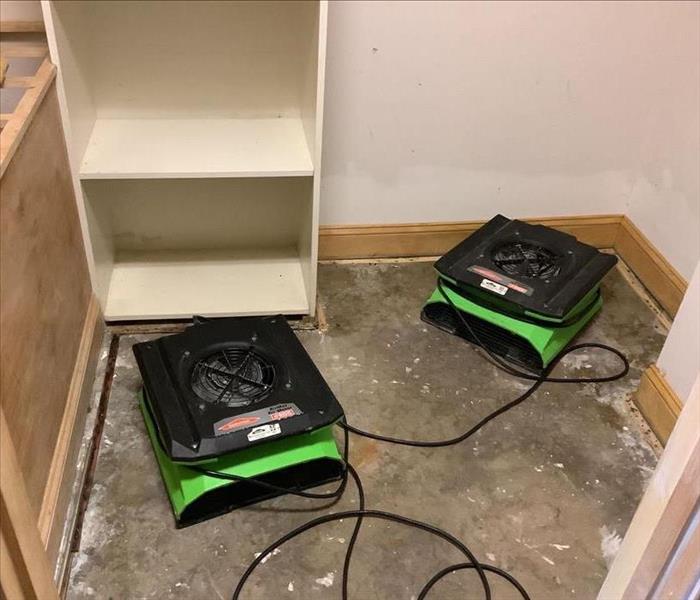Mold in Insulation: What are the Causes and How to Remediate
3/13/2024 (Permalink)
Mold can grow in various areas of a building. One of the places where mold can thrive that is often overlooked is in insulation. Mold growth in insulation can cause severe damage to the structure and affect indoor air quality. In this blog, we will explore how mold shows up in insulation, the causes of mold growth, and the ways to remediate mold in insulation.
How Mold Shows Up in Insulation
Insulation is a breeding ground for mold because of the material's porous nature. The insulation’s fibers provide an ideal place for mold spores to settle and propagate. Over time, mold growth can cause severe damage to the insulation and spread to other areas of the building.
Mold damage in insulation can be hard to detect at first glance, but the signs of a problem are usually visible. These can include:
- Discoloration: Insulation that appears darker than usual can be a sign of mold growth.
- Odor: A musty odor that lingers in a building can indicate the presence of mold in the insulation.
- Water Damage: Insulation is often damaged by water, causing mold to grow in the affected areas.
Causes of Mold Growth in Insulation
Mold growth in insulation can happen due to various factors. Some of the most common causes include:
- Water Damage: Water leaks or excess moisture can seep into insulation and create a damp environment for mold to grow.
- Poor Ventilation: Inadequate ventilation in the building can cause moisture to accumulate in the insulation, leading to mold growth.
- Humidity: High humidity levels can cause insulation to retain moisture, which increases the likelihood of mold growth.
- Contaminated Materials: Insulation material can carry mold spores, which can result in mold growth in the insulation.
Remediation Techniques for Mold in Insulation
Remediating mold in insulation requires a thorough process. Here are the steps for remediation:
- Assessment: The first step is to assess the scope of the mold damage and identify the affected areas. This assessment will guide the remediation process.
- Remove Damaged Insulation: Any insulation that is mold-damaged should be removed and properly disposed of to prevent further mold growth.
- Ventilation and Dehumidification: After removing the damaged insulation, the space should be ventilated and treated to reduce the humidity levels to combat future mold growth.
- Sanitation: The affected area should be thoroughly cleaned using suitable antimicrobial products to eliminate any mold spores and prevent any further growth.
- Replace Insulation: Once the area is clean and free of mold, insulation should be replaced. New insulation should be installed to ensure that the area remains mold-free in the future.
Preventing Future Mold Growth in Insulation
Prevention is always the best way to avoid mold growth in insulation. Here are some tips to prevent future mold growth:
- Address Moisture and Water Issues: Addressing moisture and water issues is the most crucial step in preventing mold growth in insulation. Regular inspections, identifying any signs of water damage, and treating them immediately can prevent mold growth.
- Improved Ventilation: Proper ventilation of the areas where insulation is located can help reduce humidity levels, reducing the risk of mold growth.
- Insulation Materials: Choosing insulation materials that are resistant to mold growth can also reduce the risk of future problems.
- Regular Inspection: Regular inspection of insulation at least twice a year can detect any signs of mold growth or damage and preventative measures can be taken.
Prevent Mold in Your Insulation
Mold growth in insulation can cause severe damage to a building's structure and indoor environment. Addressing moisture and water issues, improving ventilation and air circulation, regular inspection, and removal of any damaged insulation can prevent mold growth. Remembering prevention is key, addressing issues as soon as they arise can save time and money for property owners. Professional mold remediation services can be instrumental in identifying potential problems and providing solutions to prevent mold growth in insulation.

 24/7 Emergency Service
24/7 Emergency Service
